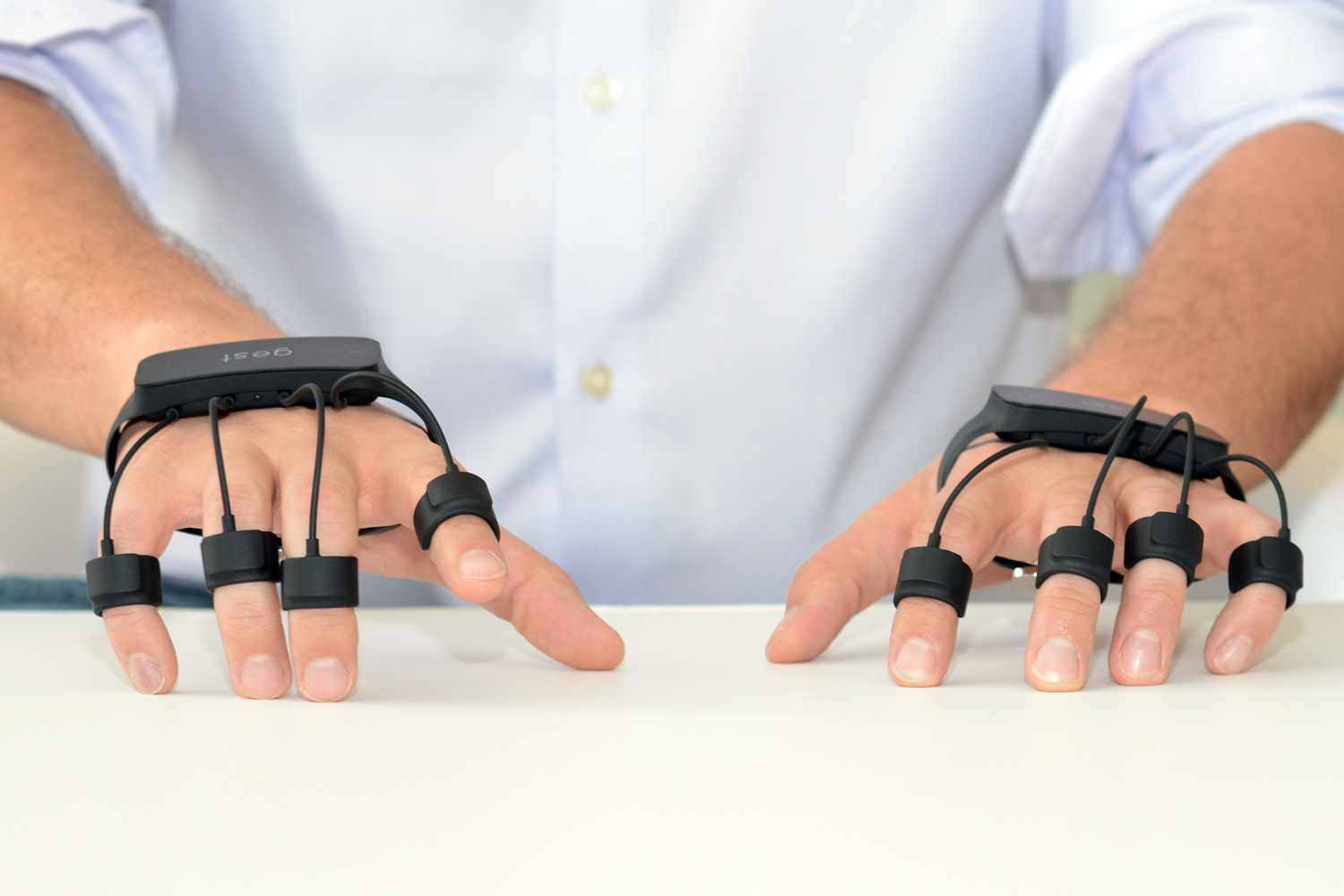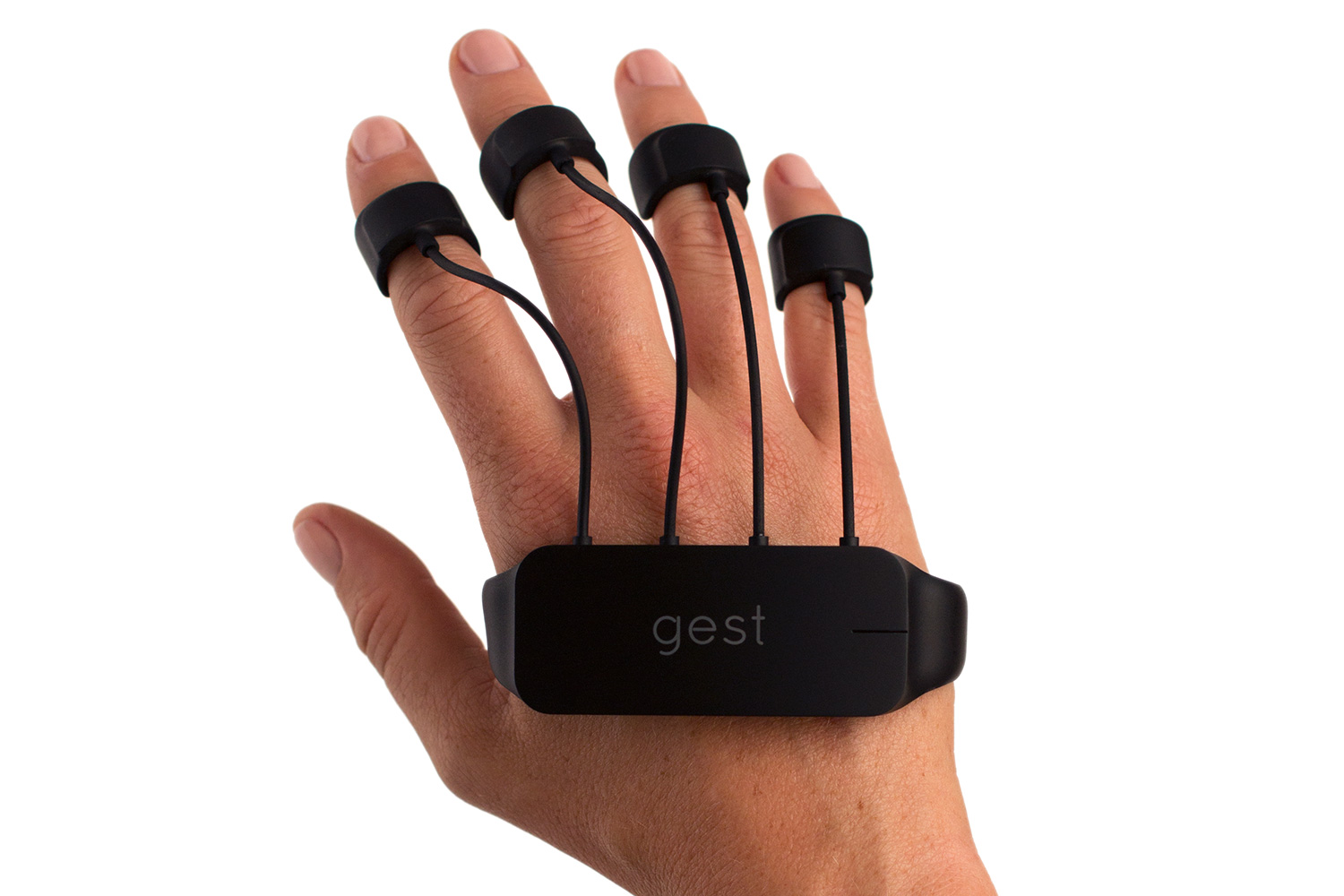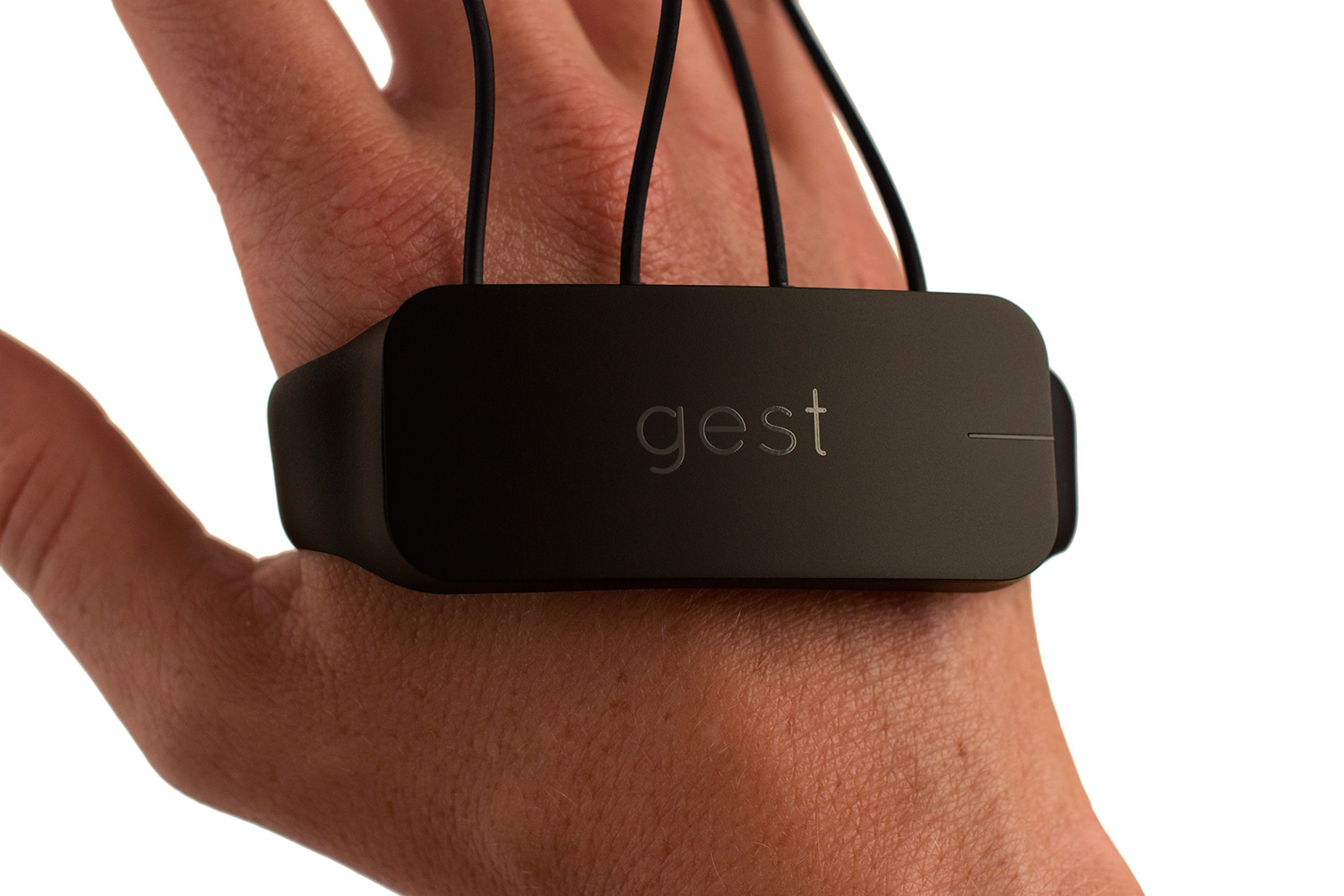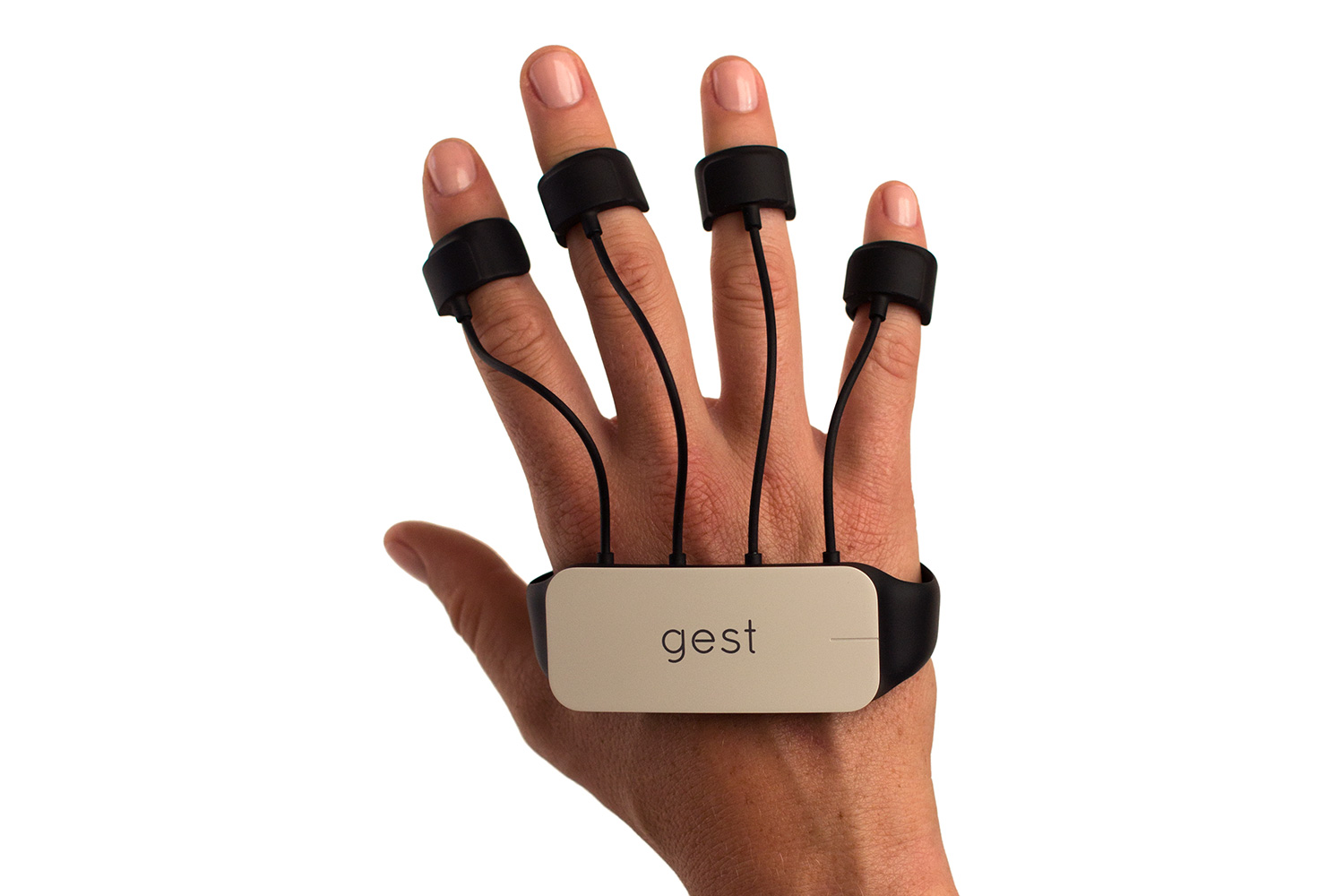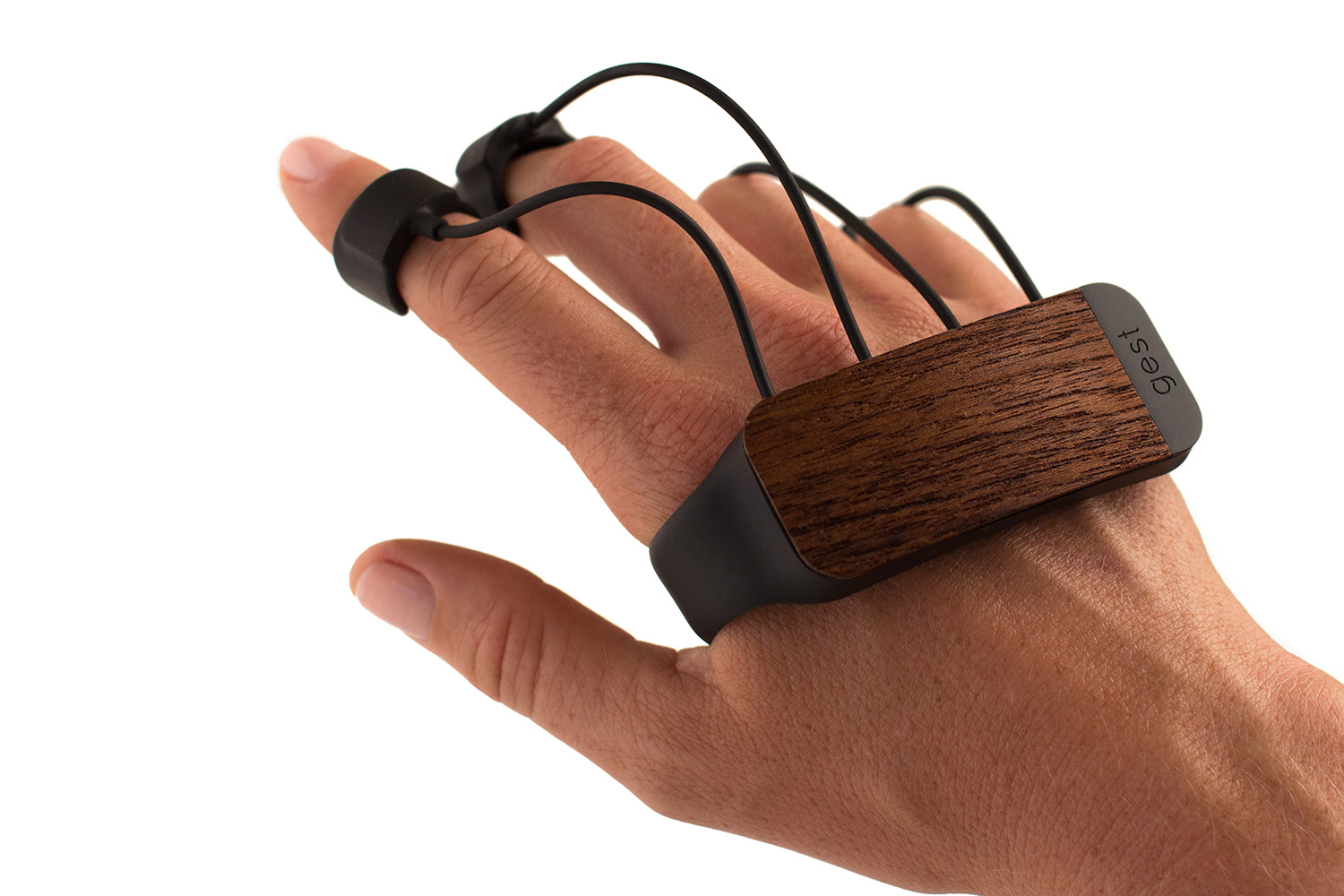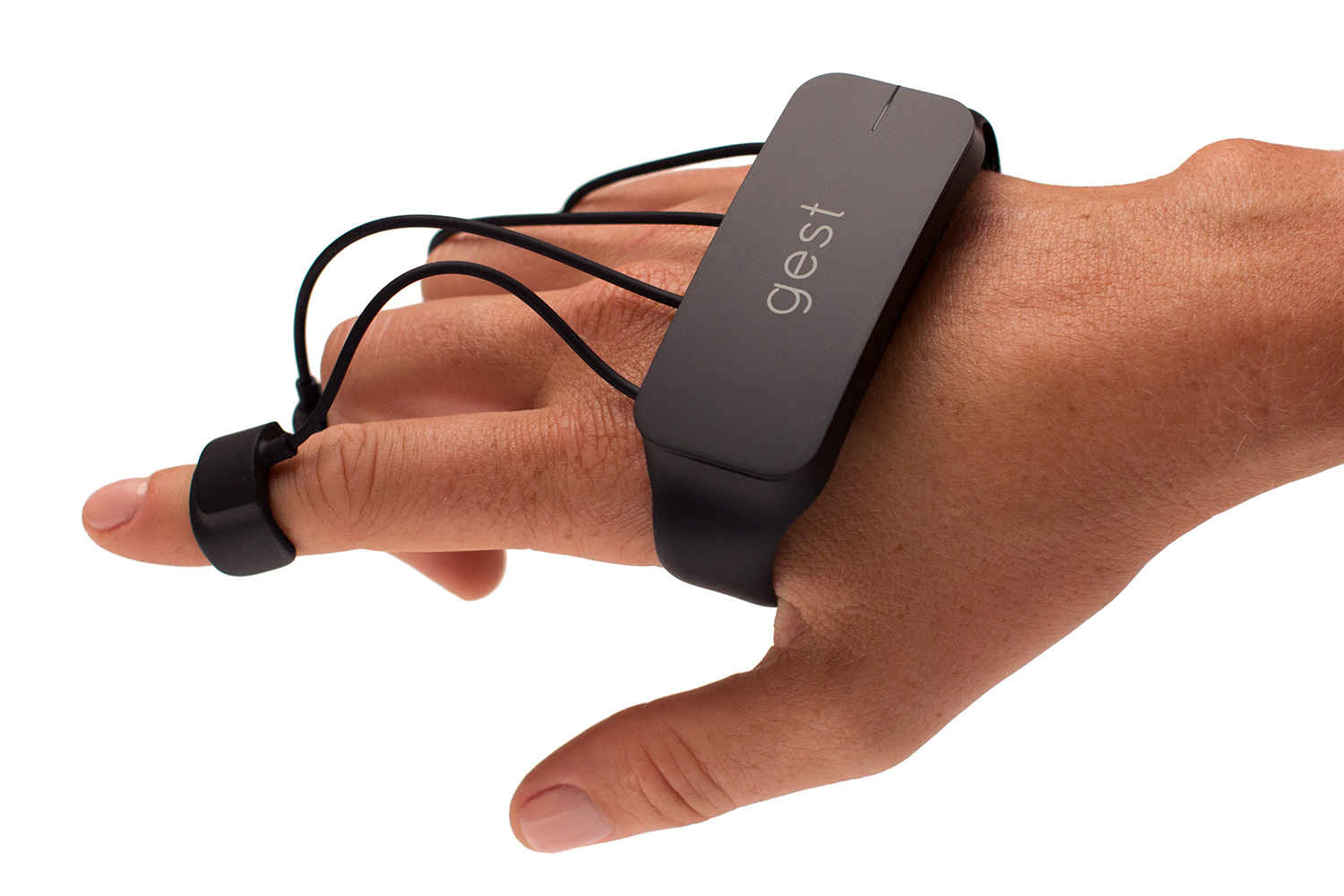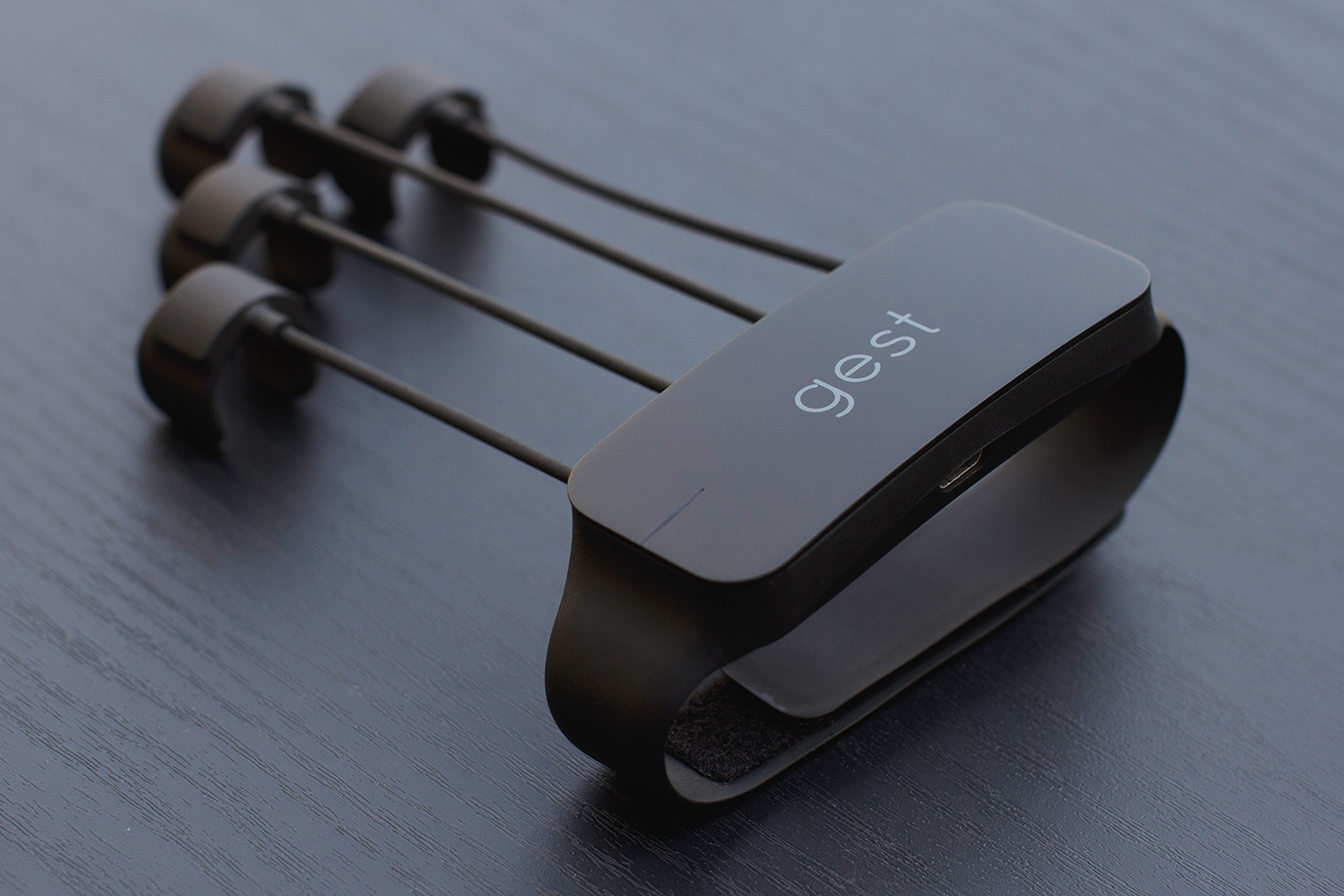In a nutshell, the Gest device is a three dimensional, gesture-based input tool that lets you navigate your computer display with hand motions. The device features a main band around the frame of the hand, and finger extensions that are designed to fit like a glove, literally. Each hand controller is packed with 15 different sensors, including accelerometers, gyroscopes, and magnetometers. These internal mechanics allow Gest to work more like a smart phone than a traditional motion capture system. Because it relies on sensors instead of a camera, Gest doesn’t need complex gesture recognition algorithms, and can therefore understand movements more quickly and reliably. Furthermore, since Gest is designed to be worn on the hand and carried around, it allows you to interface with a wider range of objects — not just ones that have gesture-recognizing cameras built into them.
While physical gestures are key to the controller, the Gest team also understands that everyone moves differently. Users can program the gestures that are most natural to their own style and workflow, and assign those movements to common actions relevant to whatever they’re working on. Gest’s DevKit API allows developers to use real time movement and position data in order to build applications that match Gest’s functionality with virtually any kind of computer activity.
Although frustration with the traditional keyboard was the catalyst that inspired Gest, the controller’s typing application seems like it’s still in the development phase. Gest lists the typing system as an “experimental feature”, and of course it requires a pair of controllers so Gest can pick up motion from both hands. The initial Gest launch will feature a complete Photoshop integration setup, which will position the controller as a design-specific tool from the start. In demonstrations, Gest-wearing designers were able to interact with computer screen visuals from three-dimensional space with a flick, grab, swipe, or twist of the wrist.
One of the most important future applications for a motion controller like Gest will be bred from integration with virtual reality and augmented reality platforms. Luckily, VR developers will have full access to Gest’s SDK as soon as the Kickstarter campaign concludes and the product officially launches. Gest has already surpassed its initial funding goal of $100,000, and the campaign still has more than three weeks left before completion. An early-bird pledge of $149 will score Kickstarter backers one Gest controller, whereas early-bird backers who want to unlock the typing function will have to pledge $299 or more. If all goes according to plan in the design for production phases, Gest controllers will ship out to Kickstarter backers starting in November 2016.
